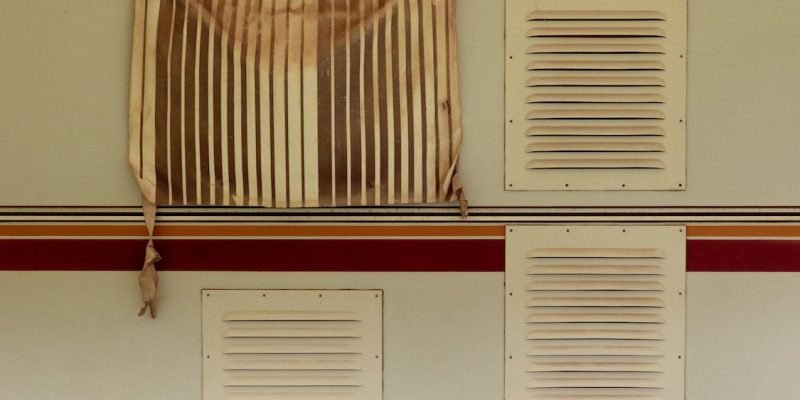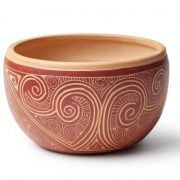As homeowners, we often look at the big picture: the architecture, the paint colors, the layout. But the tiny details, especially home maintenance, can make a massive difference. HVAC filters, a seemingly small component of your home’s heating and cooling system, play a pivotal role in ensuring the air quality in your home remains pristine.
But how much do we truly know about them? Dive in as we unravel the intricacies of HVAC filters and explore six essentials every homeowner should be well-versed with. Keep reading; the following sections might be the game-changer for transforming your living space!
Understanding the Right Size for Your HVAC Filter
When it comes to HVAC filters, size does matter! It’s not just about fitting neatly into your system, but the right-sized filter ensures maximum efficiency and air quality and can prolong the lifespan of your HVAC system. Think about it. An oversized filter can lead to inefficiencies, while a small one won’t serve its purpose, letting contaminants freely roam in your home.
- Common Sizes: The market is brimming with numerous filter sizes. You’ve got the 16″x20″, 20″x25″, and the highly sought-after 16x25x4 HVAC Filters.
- Owner’s Manual: The first go-to resource. Your HVAC unit’s manual should specify the filter size tailored for its design.
- Old Filter: Like a trusted old friend, your current filter can guide you. Most have labeled sizes, but measure it up if it’s faded!
- Professional Advice: Sometimes, leaving it to the pros is best. They can provide insights into the perfect size, especially if you’re considering an upgrade.
Speaking of upgrades, for those with larger spaces or specific needs, the 16x25x4 HVAC filters have grown in popularity due to their robust performance and ideal fit for particular HVAC systems. But remember, irrespective of size, regular maintenance is crucial.
Navigating the MERV Rating Maze
Navigating the world of HVAC filters isn’t just about sizing. Enter the MERV rating: an essential but often overlooked aspect. MERV, or Minimum Efficiency Reporting Value, determines a filter’s ability to catch and contain particles of various sizes. It’s like the report card for your filter, indicating how well it cleans your air.
The MERV scale dances between 1 and 20. Filters on the lower end (1-4) are adept at catching larger particles, such as dust mites or pollen. As we ascend the scale, filters become more refined, trapping even the minutest contaminants, including bacteria and tobacco smoke, commonly found in ratings between 13-20.
Your household’s needs are crucial in choosing the proper MERV rating. Households with members having allergies might lean towards higher ratings, while a typical home could settle comfortably anywhere in the mid-range. And, of course, let’s not forget the local environment. A higher MERV rating might be your best bet if you live in an urban area with more pollution.
Picking Between Pleated and Non-Pleated
It’s easy to get caught up in the MERV maze and overlook another vital aspect: the design of the filter. Pleated and non-pleated filters are the principal contenders, each boasting unique characteristics.
Pleated Filters:
- Appearance: These have folds, much like an accordion.
- Efficiency: Typically, higher than non-pleated, thanks to the increased surface area.
- Cost: Tend to be pricier due to enhanced efficiency and lifespan.
Non-Pleated Filters:
- Appearance: Flat and devoid of folds.
- Efficiency: Good for catching larger particles, but not as thorough as their pleated counterparts.
- Cost: Usually more affordable but may require frequent replacements.
Your household conditions play a pivotal role in this choice. For homes with rampant allergies or respiratory concerns, pleated filters are recommended. Their ability to trap more pollutants ensures the air remains as pure as possible.
On the other hand, if you’re looking to rid the air of the typical dust and pollen without much fuss, non-pleated might be the way to go. But irrespective of your choice, consistent monitoring and replacements ensure your HVAC system works optimally and your indoor air remains refreshingly clean.
Steps to Properly Install Your HVAC Filter
Installing an HVAC filter might seem straightforward, but a minor oversight can compromise air quality. One essential part is understanding your filter space’s location, usually close to the HVAC system unit. Another crucial element is recognizing the airflow direction. Your filter should always align with this airflow. Placing it backward can hinder the efficiency of your system.
Quick Guide on Filter Installation:
- Locate the slot dedicated to the filter, often marked with labels.
- Before pulling the old filter out, note the direction of the airflow arrows.
- Slide out the used filter.
- Position the new filter with the airflow arrows pointing in the correct direction.
- Secure the filter slot.
The Frequency Factor: When to Replace Your Filter
Signs It’s Time for a Change:
- Visible dirt and dust accumulation.
- Reduced airflow or noticeable strain in the system.
- Increased allergic reactions or respiratory issues in the household.
- Odd odors originating from the HVAC system.
General Guidelines for Replacement:
- Basic flat-panel filters: Every month.
- Pleated filters: Every 3-6 months.
- Households with pets or allergy sufferers: Consider more frequent replacements.
- High-quality filters: Can last up to 12 months, but best to check every 6.
Exploring Various Filter Types
HVAC filters are more than just screens that trap dust; they’re essential tools ensuring you breathe clean, safe air indoors. Let’s dive into the different filter options available and what might suit your home best.
- Fiberglass Filters: These are the most basic and affordable. They trap large dust particles but might not be the best for households requiring superior air purification.
- Pleated Filters: A step up from fiberglass, these filters have pleats that offer a larger surface area, capturing more contaminants. Ideal for most households.
- HEPA Filters: High-Efficiency Particulate Air (HEPA) filters are the gold standard. They trap 99.97% of particles, making them perfect for homes with allergy sufferers. However, they can be pricier.
- Reusable Filters: These are eco-friendly, as you can clean and reuse them multiple times. While initially more expensive, they can save money in the long run.
Conclusion
HVAC filters aren’t just another household item; they’re pivotal in maintaining indoor air quality. Making an informed choice on the right filter will keep your HVAC system running optimally and ensure you and your family breathe easier. While the technicalities might seem overwhelming, breaking down the options and understanding your home’s needs simplifies the process.




















